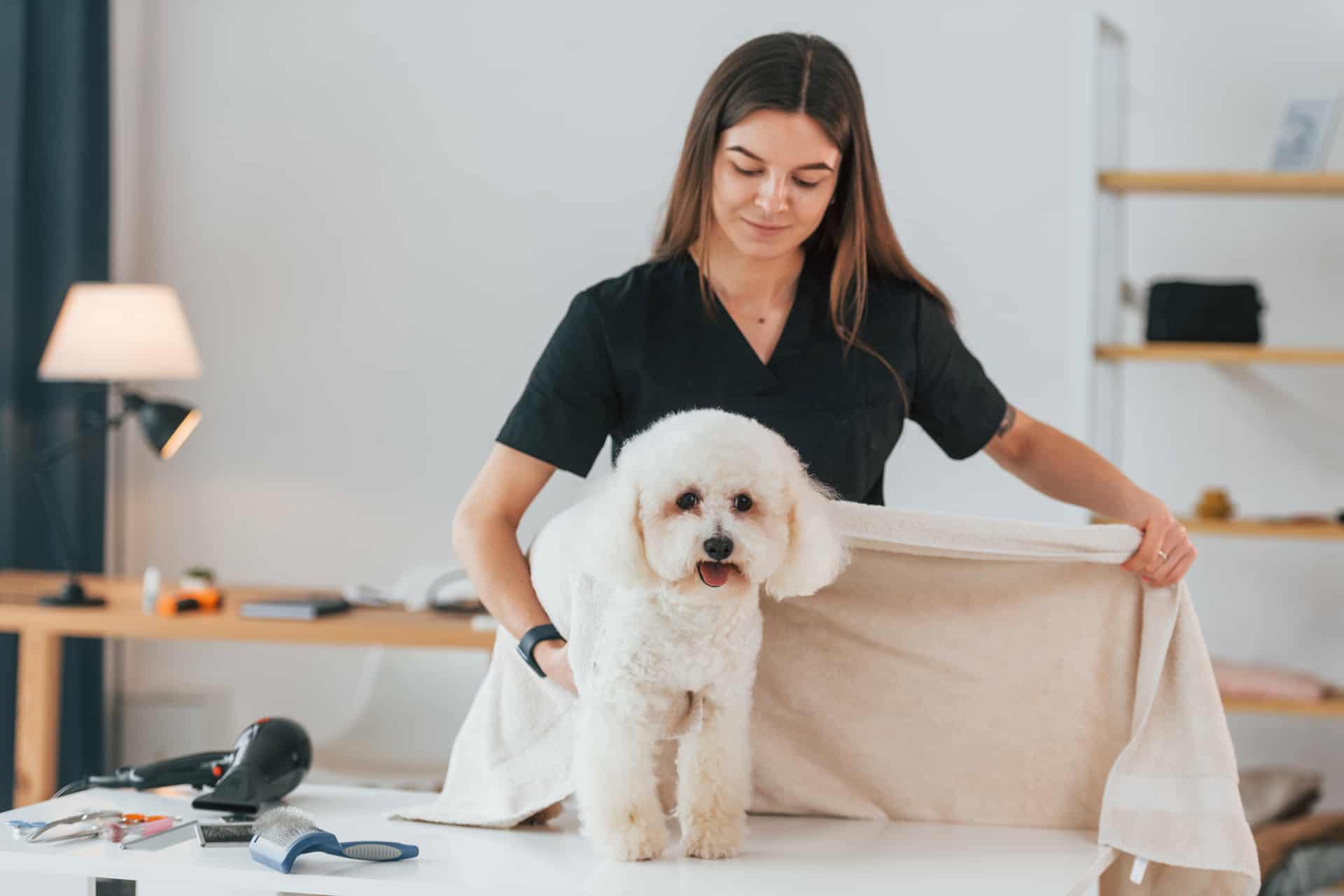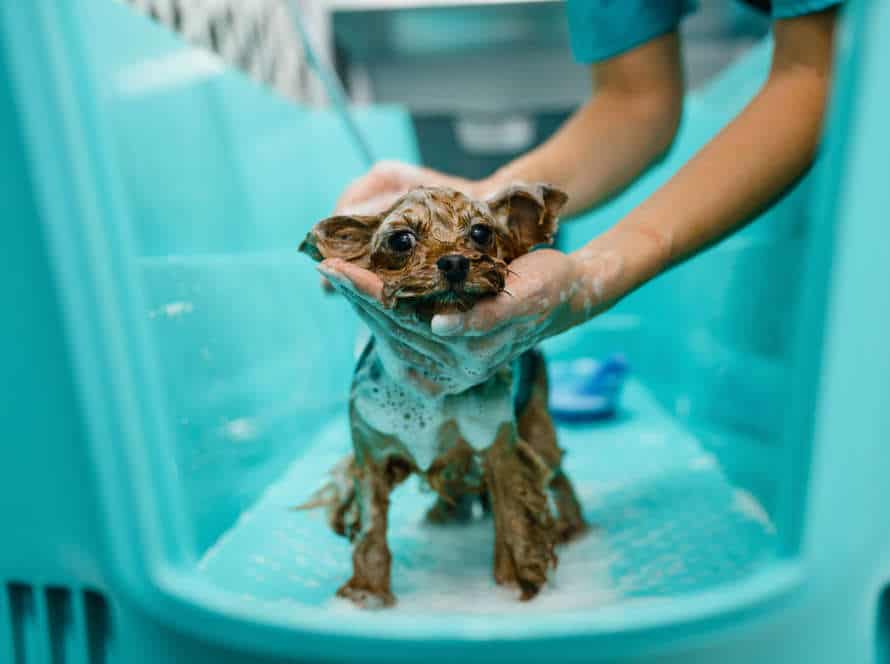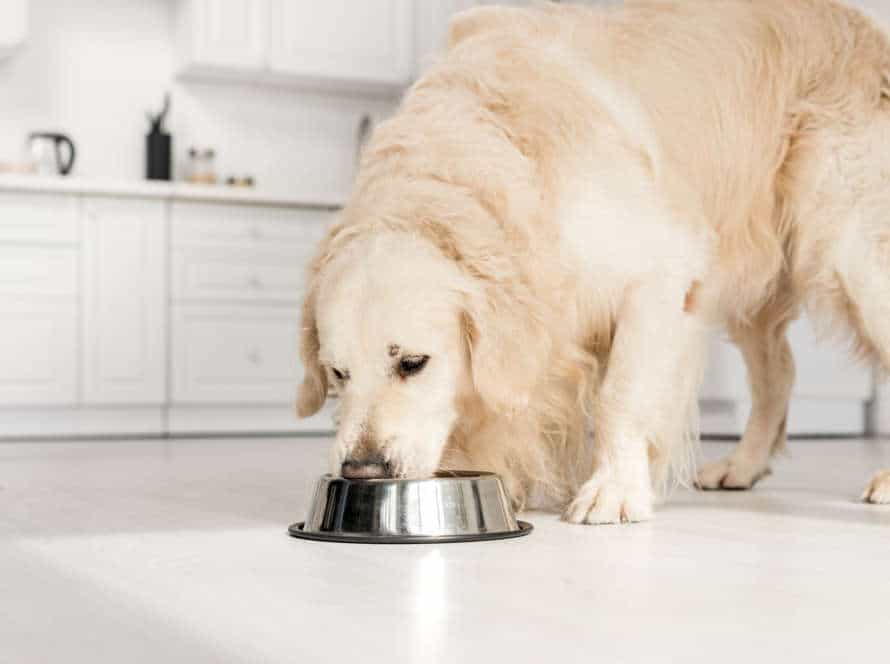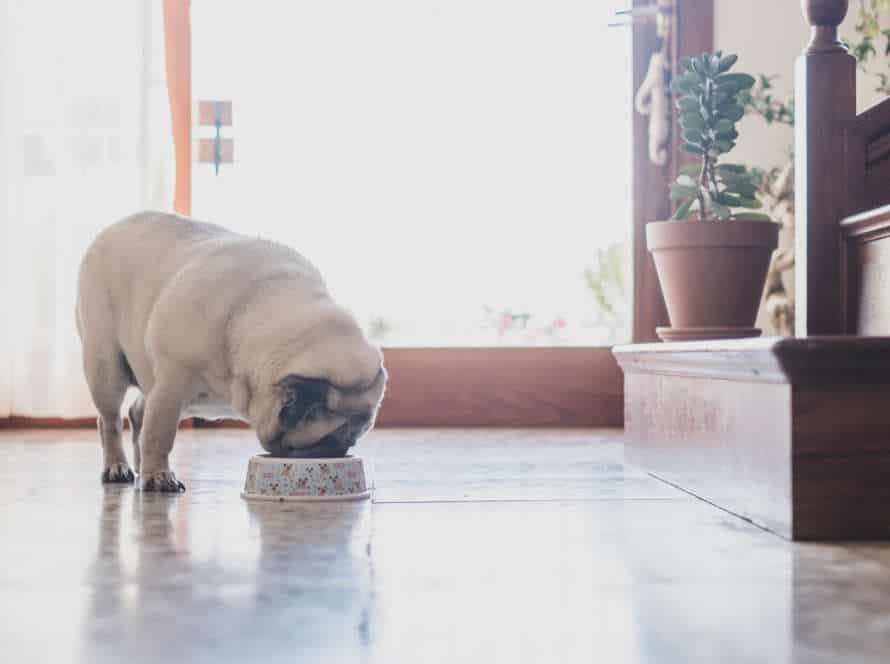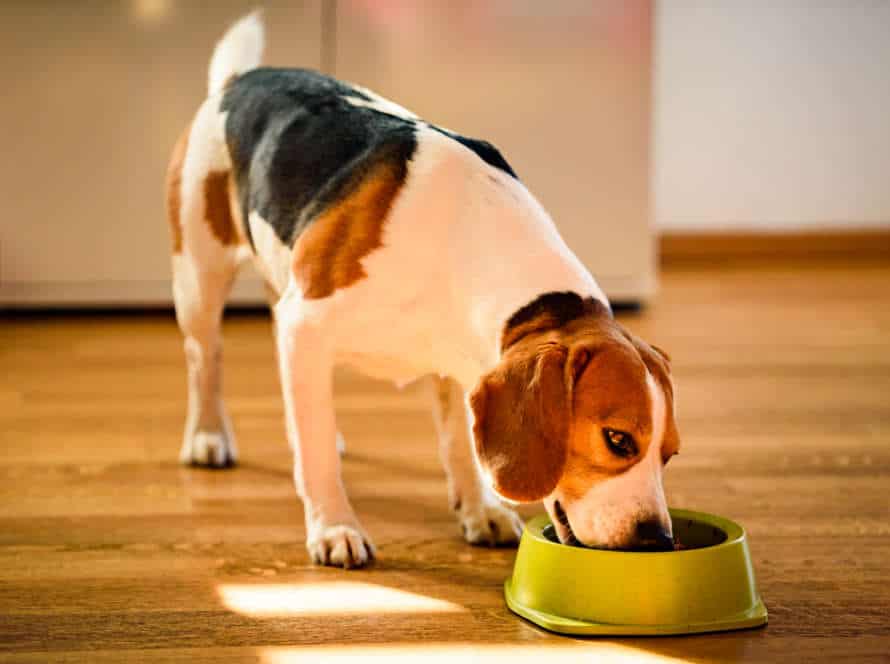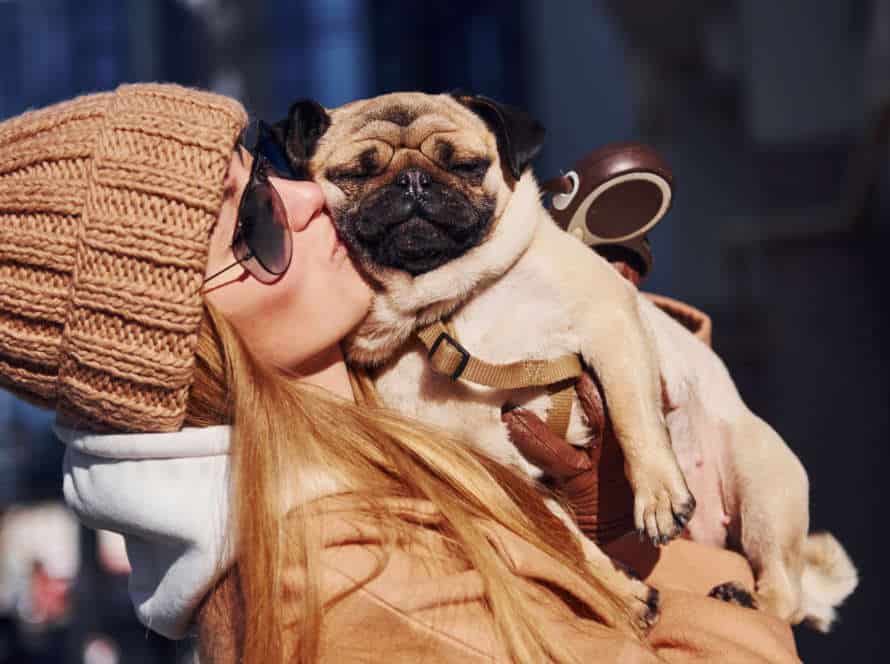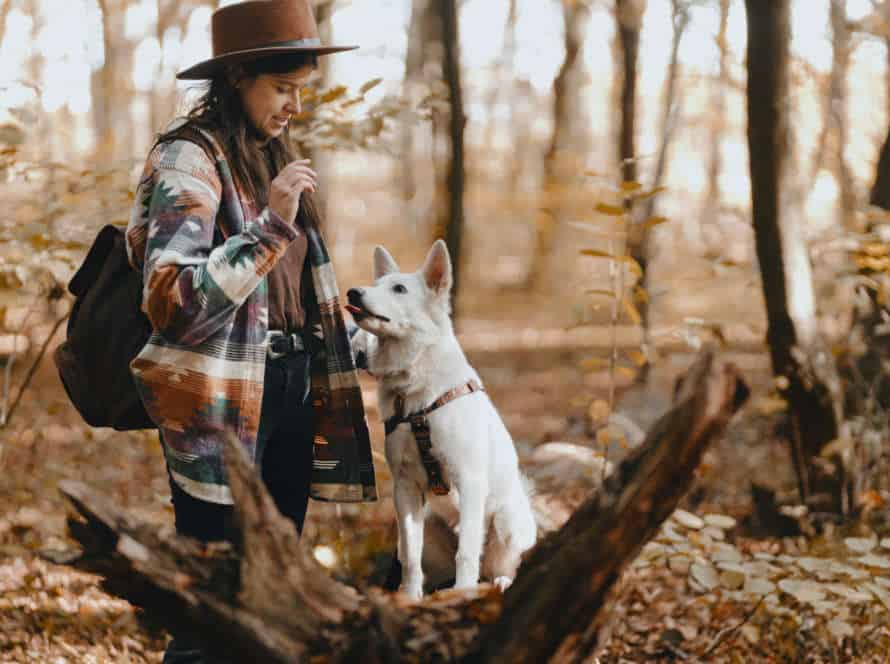Understanding the Importance of Grooming for Adult Dogs
Grooming is a must for adult dogs! It not only keeps skin and coat healthy, but can also detect any medical issues. It even helps build a stronger bond between you and your pup! Let’s dive deep into the importance of grooming for adult dogs.
Benefits of Grooming for Adult Dogs
Grooming adult dogs is a must! It’s great for their physical looks and their health. Here are the top benefits:
- Keeps their coat/skin healthy. Regular grooming removes dirt, debris and tangles. This makes their coat look better and reduces skin irritation.
- Helps spot health issues. Grooming can help detect lumps and bumps, or skin problems like rashes and dry patches.
- Lowers the risk of dental problems. Brushing your pup’s teeth often prevents bad breath, gum disease, and tooth decay.
- Strengthens the bond with the owner. Grooming is a great chance to spend quality time with your pet.
- Promotes relaxation. Grooming helps soothe nervous or anxious dogs.
So, make sure you include grooming in your dog’s routine to ensure their health and wellbeing.
Risks Associated with Poor Grooming Habits
Inadequate grooming of adult dogs can cause serious health issues and reduce the quality of life. These include allergies, infections, heat, and even behavioural problems.
To ensure your adult dog is healthy and content, regular grooming is essential. Here are a few tips:
- Brush their coat frequently to take away dirt, dead hair, and tangles.
- Bathe them every month using a mild shampoo that won’t dry their skin.
- Trim their nails every 4-6 weeks. If left too long, they can cause discomfort or even infections.
- Clean their ears, eyes, and teeth regularly to prevent infection, cavities, and vision issues.
By following these grooming habits, you can help your adult dog stay healthy and happy. Pro Tip: Professional groomers can detect any underlying health problems early, avoiding them from getting worse.
Frequency and Timing of Grooming Routines
Grooming is essential for responsible dog owners. It helps the health and wellbeing of adult dogs. It depends on breed, coat type, activity level, and environment. Here are general guidelines:
- Bathing: Every 2-4 months, or based on activity and coat.
- Brushing: Long hair/thick coats – daily. Short hair – once/twice a week.
- Nail trimming: 4-6 weeks, or when you hear them clicking.
- Teeth cleaning: 2-3 times a week. Soft-bristled brush and enzymatic toothpaste.
Regular grooming benefits your dog’s coat, prevents matting/tangling, reduces infection/disease risks.
Pro tip: High-quality tools/products to avoid discomfort/injury.
Grooming Tools and Supplies for Adult Dogs
Adult dogs need proper grooming tools and supplies. This is vital to their health and well-being. Good grooming habits keep their coat and skin looking good. It can even stop health problems from happening. Here’s what you need for adult dog grooming:
Choosing the Right Brush for Your Dog’s Coat Type
Finding the right brush for your pup’s fur type is essential. Here’s a guide to help you pick the perfect one:
- Slicker Brush: Great for long-haired, dense-furred breeds like Golden Retrievers or Afghan Hounds. Unknots, loosens fur and removes mats.
- Pin Brush: Good for all coat types, particularly long-haired dogs. Deals with debris and tangles.
- Bristle Brush: Best for short-haired breeds like Beagles or Greyhounds. Gets rid of dirt, distributes oils and ensures a glossy finish.
- Undercoat Rake: Perfect for double-coated breeds such as German Shepherds or Siberian Huskies. Removes dead hair from the undercoat to stop matting and tangles.
- Rubber Brush: Ideal for short-haired pooches. Eliminates loose fur, dirt and debris. Also great for massaging your pup during grooming!
Essential Grooming Supplies
Groom your adult pup for health and happiness. Here’s what you need:
- A brush – top quality for removing fur, mat prevention, and coating in natural oils.
- A comb – metal, with wide and narrow teeth for detangling, flea/tick checking.
- Nail clippers – sharp, vet-grade, for comfort and safety.
- Shampoo – mild, pup-specific for skin/coat cleaning and conditioning.
- Towels – soft, absorbent, post-bath or swim drying.
- Ear cleaner – gentle, to nix ear infections and dirt/debris removal.
- Toothbrush/toothpaste – dental care is a must. Get ones made just for pups.
These supplies will aid in hygiene, health, and looks upkeep.
Tools for Specific Grooming Needs
Grooming is essential to keep your pup healthy and happy. Having the right supplies makes it simpler. Here are some grooming tools you need:
- Nail clippers – keep them trimmed and short.
- Brush and comb – choose the right one for your pup’s coat type.
- Shampoo and conditioner – get dog-specific ones to avoid irritation.
- Ear cleaner – get one recommended by your vet to keep infection away.
- Toothbrush and toothpaste – brush your pup’s teeth daily.
Having the right tools makes grooming easier for both of you!
Step-by-Step Grooming Routine for Adult Dogs
Groom your adult pup – it’s essential! It helps keep them healthy, plus builds your bond. Here’s a step-by-step guide for the type of grooming your dog needs. Let’s go!
Bath Time: Tips and Tricks for a Successful Experience
Giving your furry pal a bath can be difficult. But with the proper way and a few tips and tricks, it can be a successful time for both you and your pup! Here are a few pointers:
- Brush your dog’s fur carefully before the bath, to get rid of any knots and tangles.
- Use tepid water and a shampoo only for dogs to avoid dryness and uneasiness.
- Wet your pup’s coat totally, avoiding their ears and eyes zone.
- Work up the shampoo and rub it lightly into your pup’s fur, using a circular motion.
- Thoroughly rinse your pup’s fur to dodge any skin irritation.
- Use a clean and dry towel to towel-dry your pup totally.
- Give your pup a treat to support positive behavior.
These tips will make bath time great for your furry pal and make grooming easier for adult dogs.
Brushing and Combing: Removing Tangles, Knots, and Loose Fur
Brushing and combing are key in adult dog grooming. They help undo tangles, knots, and fur that’s fallen out. Here’s a guide:
- Step 1: Look at your pup’s fur and take out any junk.
- Step 2: Use a slicker brush to get off dirt and untangle the fur. Brush against the fur’s direction from head to tail.
- Step 3: Use a comb for knots. Be gentle around delicate spots like face, ears and tummy.
- Step 4: Use a de-shedding tool for loose fluff in the undercoat. This is especially important for long-haired dogs and in shedding season.
Pro tip: Grooming not only keeps your pup’s coat healthy but also helps you bond. Make it a fun experience with treats, toys and lots of praise!
Trimming Your Dog’s Nails: a Step-by-Step Guide
It’s important to trim your pup’s nails as part of their grooming! Here’s how:
- Get your dog relaxed.
- Firmly hold their paw and use a sharp clipper to cut the nail tip.
- Avoid the quick, which is the pink part with veins and nerves.
- If you cut it, use styptic powder to stop the bleeding.
- Do all four paws, taking breaks if needed.
Trimming their nails keeps them healthy and happy. Plus, overgrown nails can cause pain, discomfort, and trouble walking.
Eye and Ear Cleaning: Techniques and Precautions
Eye and ear cleaning is a must to keep your adult dog healthy and clean. Here’s what you need to do:
Eye Cleaning:
- Use a damp cloth or gauze pad to wipe any discharge or debris near the eyes.
- Be careful with cotton balls as they may leave fibers that irritate the eyes.
- If your pup has tear staining, use a tear stain remover solution. Put it on a clean cloth and wipe the affected area.
Ear Cleaning:
- Get an ear cleaner from your vet.
- Put a few drops into the ear canal, then massage the base of the ear.
- Wipe away any solution and debris with a clean cotton ball or gauze pad.
- Never use Q-tips or insert anything into your pup’s ear canal as it can lead to injury or infection.
Pro Tip: Regular eye and ear cleaning can help prevent infection and discomfort for your pup. Make it a part of your grooming routine for their health and happiness.
Grooming for Specific Dog Breeds
Certain dog breeds need more grooming than others. Labradors and Goldens have short fur and need minimal care. But other types require specific routines. Let’s look at the grooming needs of particular breeds.
Grooming Needs for Long-Haired Breeds
Long-haired doggies need special grooming routines to keep their coats healthy, mat-free and clean. Here are some tips:
- Brush your pup’s fur at least once a week with a slicker brush or comb with close-together teeth.
- Cut your dog’s hair often, especially around their face, ears, paws and rear end. You could do it yourself or take them to a professional groomer.
- Clean them with a long-haired breed shampoo once a month. Don’t forget to rinse and dry them properly.
- Check their eyes, ears, and teeth for any sign of sickness and take them to the vet if needed.
Shedding season? Extra grooming sessions might be needed to prevent hair buildup and skin irritation.
Grooming for Short-Haired Breeds
Grooming short-haired dog breeds is quite simple and doesn’t need much work. But, proper grooming is essential to keep your pup’s coat healthy and lustrous. These are some needs for grooming adult short-haired dogs:
- Bathing: Give your pup a bath every two to three months with a puppy-specific shampoo. Also, rinse thoroughly to avoid any residue.
- Brushing: Brush your pup’s fur once a week to take away any extra hair, dirt, or debris. Use a brush with soft bristles for a gentle session.
- Nail Clipping: Clip your pup’s nails every month to avoid overgrowth and harm. Use a dog nail clipper and be careful of not cutting the quick.
- Ear Cleaning: Short-haired breeds are prone to ear infections, so keeping their ears clean and dry is a must. Use an ear cleaning solution and cotton ball to wipe away any dirt or debris.
These grooming routines will keep your pup healthy, content, and looking its best.
Grooming for Double-Coated Breeds
Double-coated breeds, like German Shepherds, Huskies, and Pomeranians, need special attention for their coat care to keep it shiny and healthy, as well as minimize shedding.
Here are some tips for grooming your double-coated breed:
- Brush with a slicker brush regularly to remove loose hair, dirt, and debris.
- Bathe only when needed, as frequent bathing can strip the fur’s natural oils.
- Trim fur around paw pads, ears, and anus to avoid matting, and to stop debris buildup.
- Use a de-shedding tool to remove the undercoat while preserving the topcoat.
- Consult a professional groomer if you’re not sure how to groom your double-coated breed.
Special Grooming Situations for Adult Dogs
Adult dogs need different grooming needs. Factors such as long fur can complicate these needs. Owners must take special care when brushing long fur to avoid matting and tangling. Special seasonal grooming, like for summer and winter, could be necessary for adult dogs. Here are special grooming situations for adult canines:
Grooming for Senior Dogs
Grooming for senior pups needs special attention and care. To keep them healthy and comfy in their aging years, here are some essential routines:
- Brushing: Senior doggos may shed more and have thinner fur. To avoid irritating their skin, use a soft-bristled brush.
- Nail care: As they age, nails may grow longer and thicker. Trim them regularly and file sharp edges, to avoid any injuries.
- Dental hygiene: Dental issues can be more common. Brush their teeth or give dental treats to prevent plaque and gingivitis.
- Coat care: Skin conditions, dry skin, and dull coats can occur. Add fish oil or coconut oil to their food. Regularly bathe, using moisturizing shampoo.
- Ears and eyes: They might develop infections or discharge. Check weekly and visit the vet if concerned.
Grooming needs patience, gentle touch, and lots of love to keep seniors happy and healthy.
Grooming for Dogs with Health Issues
Groom your pup with health issues? Special attention and care is necessary for their comfort and safety. Here are some tips:
- Talk to the vet and create a plan – tailored just for your pup.
- Use soft-bristle brushes, rubber grooming mitts and de-shedding tools.
- Be gentle around eyes, ears, and paws.
- Keep your pup relaxed with a calm voice.
- Give rewards and praise for good behavior.
These tips will help your pup feel comfortable and confident while being groomed – even if they have health issues!
Grooming for Shelter and Rescued Dogs
Grooming for shelter and rescue dogs needs special care. Here are a few things to consider:
- Matted fur: Use a slicker brush and mat splitter to detangle. A detangler solution can help loosen stubborn mats so the dog isn’t hurt.
- Overgrown nails: Trim and file the nails often. Gradually file them down if they are curled or overgrown, so you don’t injure the quick.
- Fearful or anxious dogs: Use aromatherapy, soft music, and gentle handling to make them relaxed.
- Skin conditions: Dogs with skin allergies or conditions may need special shampoos, conditioners, or medicated treatments. Ask a vet or professional groomer for advice.
Frequently Asked Questions
1. How often should I bathe my adult dog?
It depends on your dog’s coat and lifestyle. Dogs with short hair and no skin issues may only need to be bathed every 2-3 months, while dogs with long hair or frequent outdoor activity may need to be bathed once a month.
2. What grooming tools do I need for my adult dog?
You will need a brush or comb suitable for your dog’s coat type, nail clippers or a grinder, and ear cleaning solution. Additionally, you may want to invest in a de-shedding tool or grooming scissors for trimming.
3. Can I groom my dog myself or should I take them to a professional?
It’s possible to groom your dog yourself, but it may be helpful to take them to a professional groomer for a professional trim or if your dog has particularly difficult or sensitive areas to groom.
4. Do I need to clean my dog’s ears?
Yes, it’s important to clean your dog’s ears regularly to prevent infection and excess wax buildup. Use a pet-specific ear cleaning solution and cotton balls or gauze to gently clean the outer ear canal.
5. How do I prevent my dog from getting matted fur?
Regular brushing is the best way to prevent mats and tangles in your dog’s coat. Make sure to pay attention to areas prone to matting, such as behind the ears and under the legs. If mats do occur, use a detangling spray and brush gently from the outside in.
6. How often should I trim my dog’s nails?
It’s recommended to trim your dog’s nails every 4-6 weeks, or whenever you start to hear them clicking on hard surfaces. Make sure to use pet-specific nail clippers or a grinder and avoid cutting into the quick, which can be painful for your dog.

